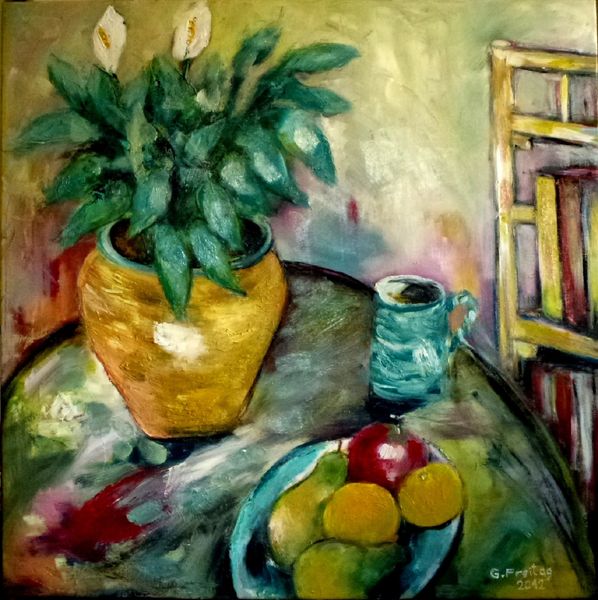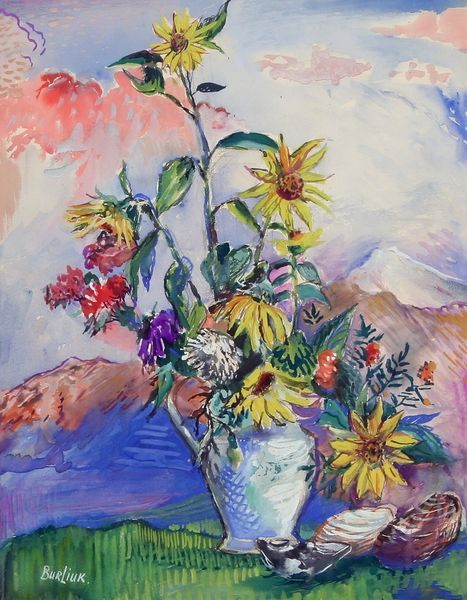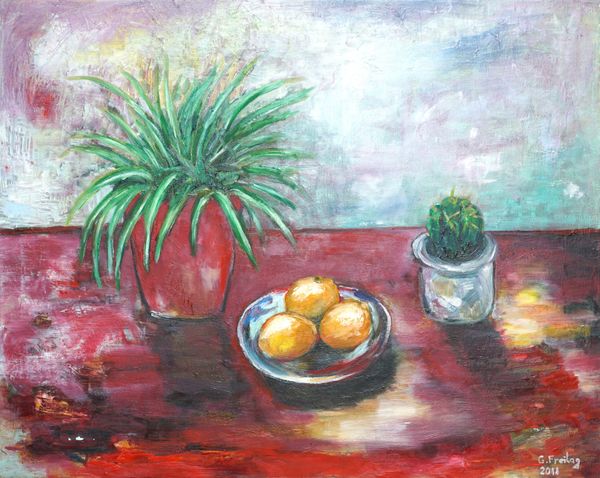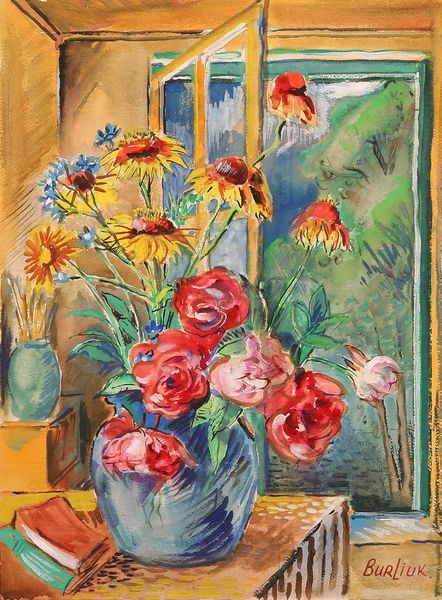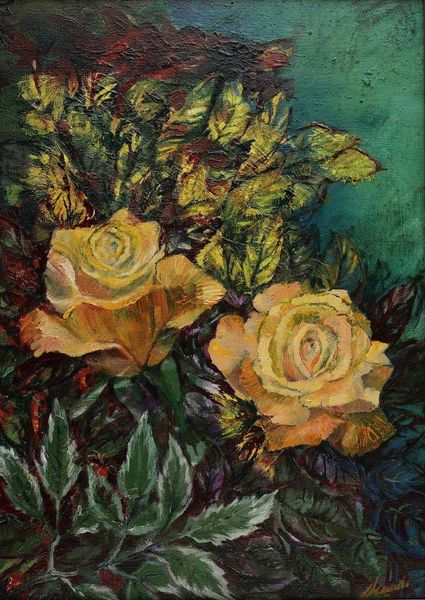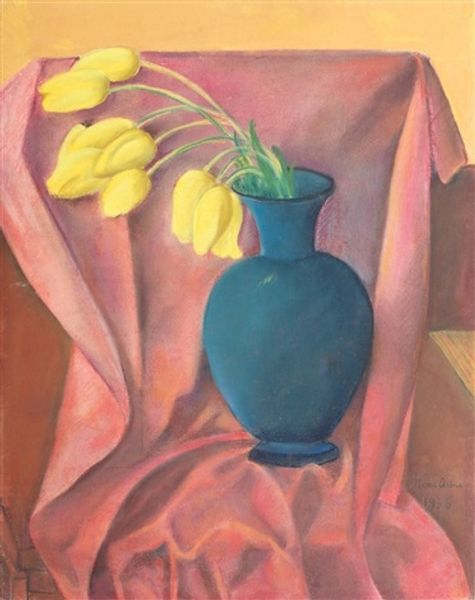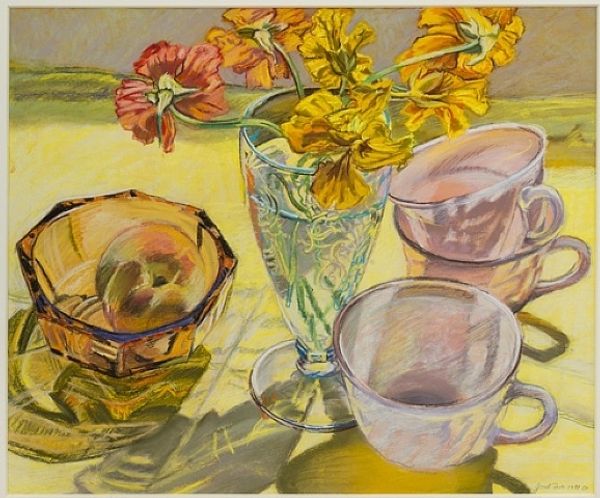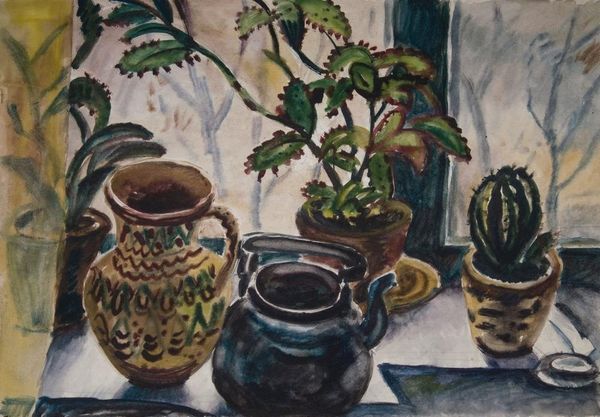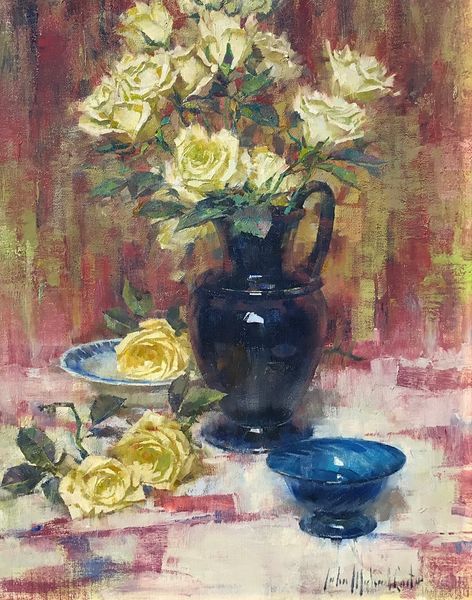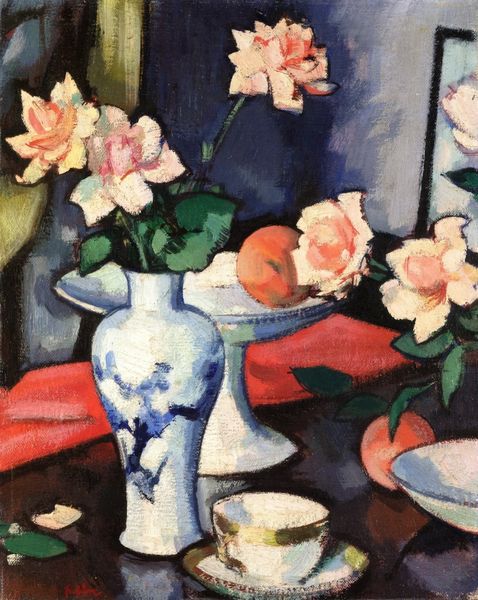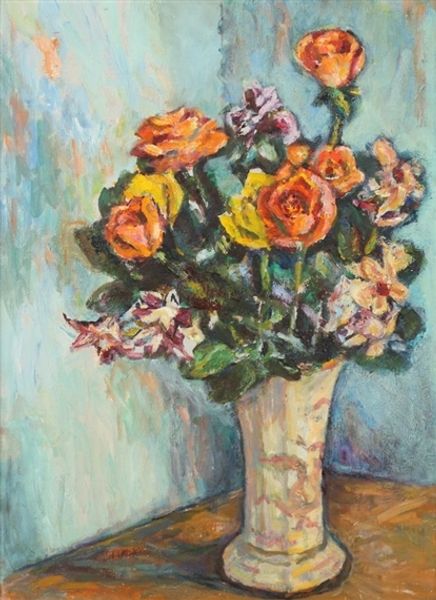
Dimensions: 33.7 x 24.9 cm
Copyright: David Burliuk,Fair Use
Curator: Here we have David Burliuk’s “Still Life with Roses and Fruits,” created in 1933. It provides an intimate view into the artist's personal space during this period. Editor: Immediately I'm drawn to the high-key palette and how the colors create an almost dreamlike atmosphere. The visible brushstrokes give a tangible quality to the fruit and flowers, they look so luscious and tactile. Curator: The still life genre has long been a vehicle for exploring bourgeois values and consumerism. By placing the roses and fruit against a seascape backdrop, Burliuk infuses it with a certain poignancy, commenting perhaps on the ephemeral nature of beauty amidst the vastness of the world. He spent time in the US but moved back to visit his home when he could; I see those roses in particular as symbolic of his heritage. Editor: It’s fascinating how the composition draws your eye—the contrast between the solid forms of the pitcher and fruit, and the blurred expanse of the sea beyond. You can really sense the way he applied layers of watercolour to build up the colors. Do you think that particular shade of blue for the pitcher might be some imported ceramic dye or pigment? That colour and that glass weren't usually available or affordable. Curator: Absolutely! The still life's deliberate choice to use materials can also point to accessibility. It invites viewers to look beyond mere representation. But the painting goes even further than simply that by pointing to both an accessible moment through the window and a high culture subject matter on the table. Editor: I love how the painting seems to suggest more than just a representation. I wonder about his handling of watercolour in particular; what grade was his paper and brushes? I see no ground and quite thin paint—an economical handling to some degree? Curator: I see this work as an intimate portrait, not just of objects, but of an artist navigating his relationship to his homeland amidst the complexities of modern life and war abroad. The decision to juxtapose the domestic scene with the open sea can tell us a great deal about social forces beyond our interior. Editor: Ultimately, what stays with me is the sheer materiality—how watercolour is so immediate, so delicate. It’s a humble medium that becomes extraordinary here in depicting not just beauty, but a moment in time that Burliuk expertly captures.
Comments
No comments
Be the first to comment and join the conversation on the ultimate creative platform.
